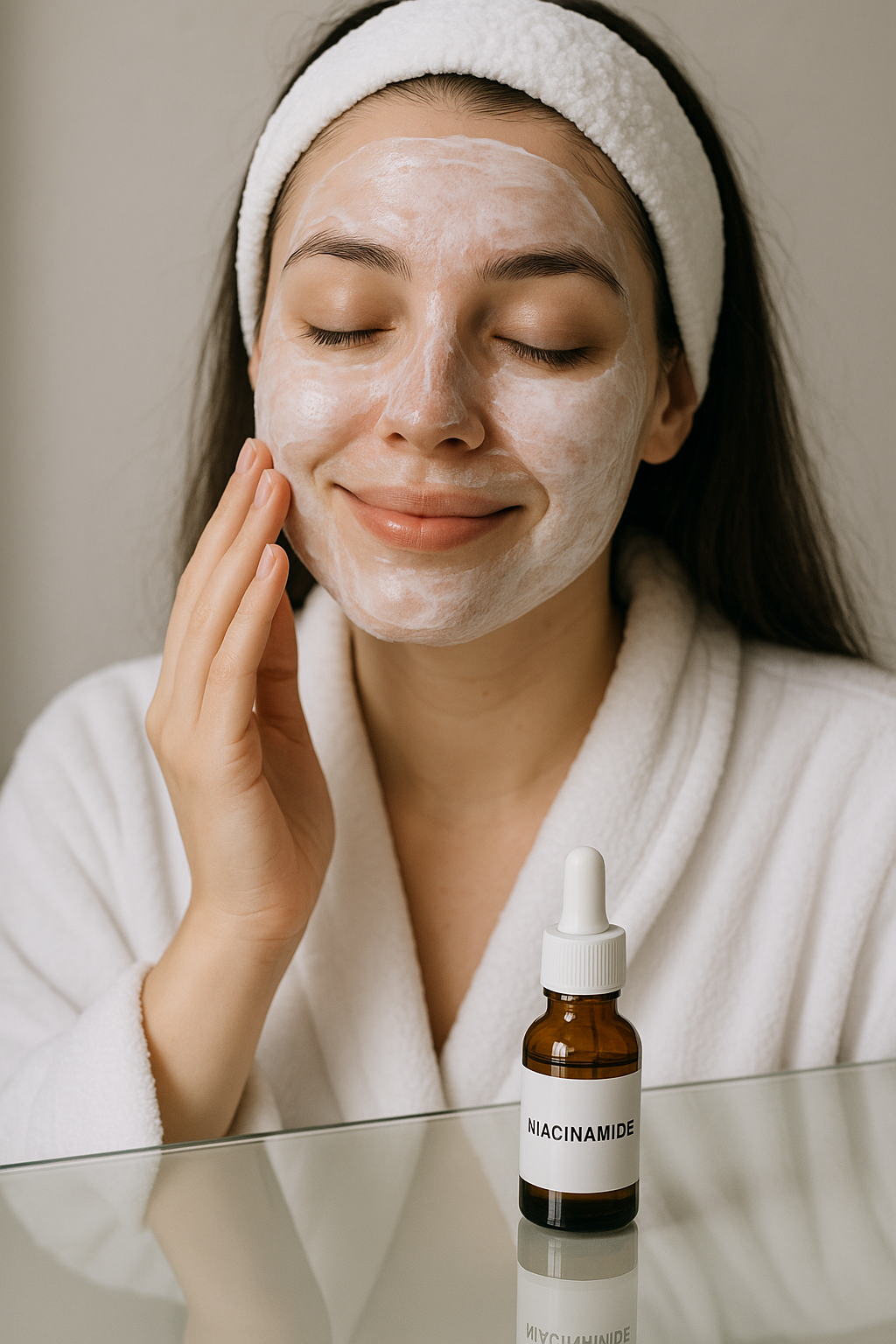We’ve all heard of niacinamide, right? It’s in almost every skincare product these days and you can’t scroll through social media without seeing it. And honestly, it makes sense. It’s known for giving you smoother skin, smaller pores, and a brighter, healthier glow. But let’s be real. Not everyone gets instant results. Some people start using it and suddenly, ‘Bam!’ tiny bumps or breakouts appear.
So what’s going on?
Truth is, it's not that niacinamide is “bad” for your skin. But like any active ingredient, it needs to be used the right way. Here’s how to make niacinamide for skin work for you and yes! Without the unwanted side effects.

Why Is Niacinamide So Popular
Niacinamide is a form of vitamin B3 and is commonly known for being gentle yet effective. From dullness to redness, from breakouts to uneven tone, it’s the quiet achiever in your routine. You’ll most likely find it in a lot of niacinamide skin care products because it’s that easy to fit into almost any routine.
What Does Niacinamide Do?
-
Reducing oiliness
-
Minimising the appearance of pores
-
Calming redness
-
Brightening the skin
-
Strengthening your skin barrier
Who Should Use Niacinamide?
You’ll love it if your skin is:
-
Breaking out or recovering from acne
-
Looking dull or uneven
-
Oily around the T-zone
-
Easily irritated or sensitive
It works for both beginners and seasoned skincare lovers, as long as it’s used the right way.
How To Use It The Right Way
-
Go Low and Slow
We get it. You want results fast. But starting with a high percentage of niacinamide might just send your skin into panic mode.
If you’re new to it, start with 2 to 5 percent. Let your skin adjust slowly. Using too much and too soon is one of the biggest reasons people break out. Especially when they’re trying niacinamide for skin the first time.
-
Don’t Overcomplicate Your Routine
Layering too many products with active ingredients like acids, retinol, and niacinamide can backfire. It doesn’t mean more results. It just means more chances for irritation.
Keep your routine simple when introducing niacinamide. Think cleanser, niacinamide serum, moisturizer and sunscreen. That’s it.
-
Apply on Damp Skin
Want better absorption and more hydration? Apply your niacinamide serum while your skin is still slightly damp after cleansing. Not dripping wet, just comfortably damp.
It helps the product sink in better and can even reduce dryness or tightness that sometimes comes with new serums.
-
Pay Attention to Your Skin
If your skin feels itchy or you start breaking out more than usual stop and listen. Your skin might be telling you it is not happy.
Take a break or switch to a gentler formula. It is okay. Niacinamide might be popular but that does not mean it works for absolutely everyone.
-
Be Patient and Consistent
This is not a quick fix kind of product. You will need to give it at least four to six weeks to see real changes. That means sticking to it regularly and not jumping from one product to another.
Give your skin the time it needs and the results will follow.
Don’t Forget the Sunscreen!
Niacinamide works even better when paired with daily sun protection. Even though niacinamide is gentle, you still need protection from the sun because UV rays undo progress. So lock in those skincare wins by applying SPF every morning. Yes, even on cloudy days.
To Sum It Up
Niacinamide can totally upgrade your skincare routine, but only if you use it the right way. Start small, keep things simple, and give your skin the space to adjust.
If it didn’t work for you before, maybe this time with the right approach, it will.
Trust your skin, go at your own pace, and let the results speak for themselves.


